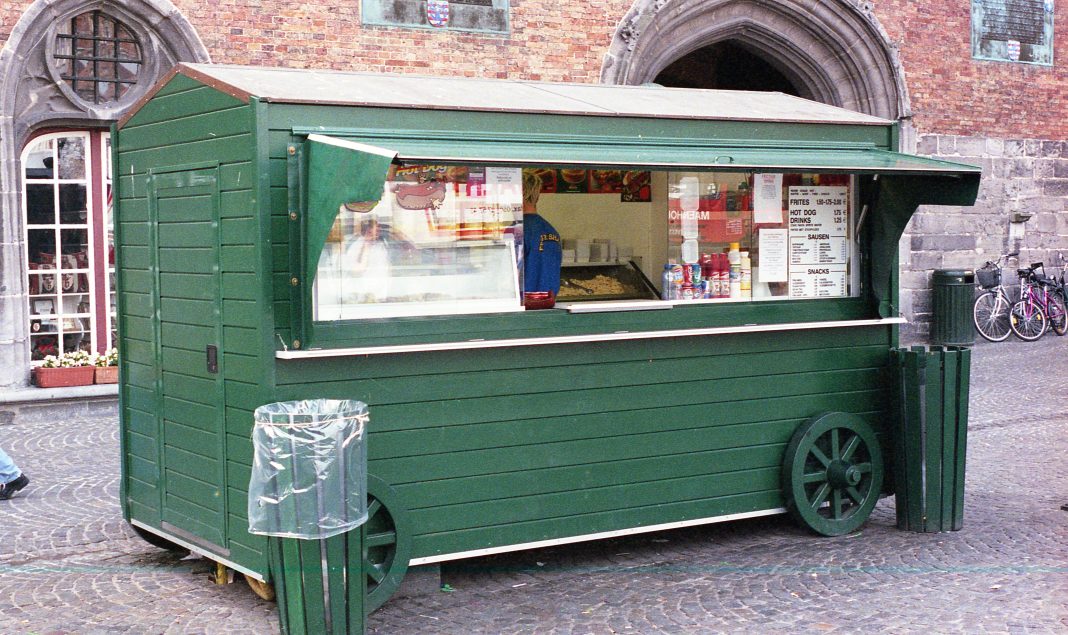
Edibles & Potables is a weekly Sunday morning excursion in consideration of culinary topics falling outside the boundaries of our metropolitan Louisville coverage area.
Gastronomy is among the more useful hobbies to indulge when visiting Belgium, particularly for beer lovers (I’ll leave the suggested pairings for anther day).
Belgian cuisine is widely varied with significant regional variations while also reflecting the cuisines of neighbouring France, Germany and the Netherlands. It is sometimes said that Belgian food is served in the quantity of German cuisine but with the quality of French food.
Belgian meals lend themselves to rhapsodies: moules-frites (mussels and fries), carbonade flamand (beef stew), waterzooi (fish stew), konijn (rabbit) in geuze, filet américain (steak tartare) and paling in ‘t groen (eel in green sauce, a personal favorite).
At the same time, traditional dishes like these are just one aspect of eating in Belgium. There are burger joints, pizzerias and KFC, along with the full range of restaurants specializing in world cuisine, from sushi to curry, and including a strong contingent of North African eateries. Boudin (blood sausage) remains on the menu in Belgium, but it has long since been joined by salads and smoothies as daily options.
The Bulletin is “the platform for Belgium’s international community,” reflecting Belgium’s transformation into a modern, multi-national European nation.
The Bulletin has been serving Belgium’s international community for almost 60 years, helping readers understand and appreciate the country they now call home. From an eight-page newsletter created in the basement of journalist Monique Ackroyd’s Uccle home in 1962 to a weekly magazine that became a must-read for expats, The Bulletin has a proud history and a strong identity.
When the pandemic began, and it appeared that travel options might be limited for the foreseeable future — I’d have loved being mistaken about this conclusion — I signed up for The Bulletin’s daily newsletter. Belgian food and drink culture isn’t the only area of coverage, but it comes up fairly regularly, as with this look into ghosting, delivery-style.
‘Dark kitchens’ thriving in pandemic-era Belgium, by Nick Amies
It may come as a surprise to some who regularly order takeaway food but some of the restaurants listed in the many online directories are not restaurants as we know them.
They produce food, yes, but in some cases, there is no storefront or room inside for diners. These are called dark kitchens – or ghost kitchens – and are a relatively new phenomenon in Belgium despite exploding in the US, Asia and UK in recent years.
Photo credit: Author’s collection. It’s a high-traffic frite stand on the main square in Brugge, circa 2004.





















